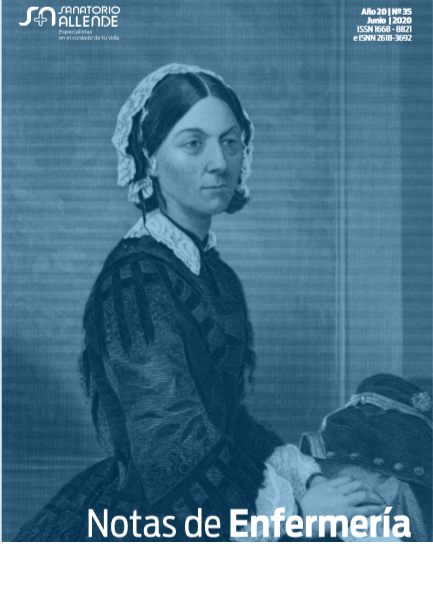Characteristics of renal transplant patients with delayed graft function, assisted in the intensive therapy service of the Institute of current Cardiology between 2016 and 2018
DOI:
https://doi.org/10.59843/2618-3692.v20.n35.29152Keywords:
Renal Insufficiency, Kidney Transplantation, Tissue DonorsAbstract
This research was intended to describe the characteristics of renal transplant patients with delayed graft function. Descriptive, transversal and observational study. Population: assisted renal transplants at the Institute of Current Cardiology between 2016 and 2018 that met the inclusion criteria. Own form was used; the data were obtained from review of medical record.
The information collected was scanned by computer Epidat_4.2. The institution's committee was endorsed. 61 transplanted
patients were studied; 43% belonged to living donors and 57% to cadaveric. 66% of cadaveric donors had delayed graft function, those from living donors did not present it. In terms of sex 48% of males had delayed function; women was 28%. In age of patients, the average was 40.6 years x 15.7; the increased frequency of function delays was observed in the age group of 31 to 50 years with 44%. As for nutritional status 17% who were overweight and 48% underweight were delayed graft function. Depending on the years on pre-transplant dialysis, 65% of those with 4 to 7 years of dialysis had delayed graft function. According to cold ischemia time of the transplanted organ, 52% had delayed graft function when the time was greater than 15 hours. At the request of postoperative dialysis, 66% had delayed graft function and belonged to cadaveric donors. In renal vascular resistance index in the first 24 hours, 65% with delay of graft function had pathological index. In conclusion, male sex, age group of 31 to 50 years, having altered nutritional status, having dialed pre transplant between 4 to 7 years, suffering a prolonged time of cold ischemia > 15 hours and present a pathological renal vascular resistance index, are present characteristics; renal transplants with delayed graft function; and need to be taken into account when planning these surgeries.
Downloads
References
Schiavelli, R. et al. RETRASO DE LA FUNCIÓN DEL INJERTO EN TRASPLANTE RENAL. Rev. Nefro. Diali. Tras. 2015; 35(4): p. 182-187. URL: http:// www.renal.org.ar. Última visita: 12/04/2019.
Martín, P. et al. Trasplante renal. SciELO. 2015 mayo-Agosto; 29(2): p. 79-91. URL: http://scielo.isciii.es/scielo.php?script=sci_arttext HYPERLINK. Última visita: 14/03/2019.
Caravaca, F. et al. Factores predictivos sobre el retraso inicial de la función del
injerto renal: ¿juega algún papel significativo el hiperparatiroidismo secundario? Rev. Nefro. 1995 diciembre. Vol.: 15 (6). Pág.: 515-612. URL://www.revistanefrologia.com/es-factores-predictivos-sobre-el-retraso-articulo-X0211699595007981. Última visita: 15/04/19.
Martín, P. Errasti, P. Trasplante renal. SciELO. 2006. Vol. 29 (2). Pág. 79-92. URL: http://scielo.isciii.es/pdf/asisna/v29s2/original7.pdf. Última visita: 20/04/2019.
Piñón, J. et al. Impacto de la función renal retardada en la sobrevida del injerto renal de donador de cadáver. Rev. Med. Inst. Mex. Seguro. Soc. 2009. Vol. 47 (1). Pág. 33-38. URL: www.medigraphic.com/pdfs/imss/im-2009/im091i.pdf. Última visita: 20/04/2019.
Ruiz, O. et al. Isquemia fría prolongada, factor para rechazo agudo del injerto en trasplante renal cadavérico. Rev. Cirugía y Cirujanos. Septiembre-octubre, 2009. Vol. 77 (5). Pág. 381-384. URL: www.medigraphic.com/pdfs/circir/cc-2009/cc095g.pdf. Última visita: 07/07/2019.
Fernández, Castillo. et al. Estudio del impacto del índice de masa corporal pre-trasplante sobre el pronto funcionamiento del injerto renal. Rev. Nutr. Hosp. 2016. Vol. 33 (4). Pág. 930-934. URL: https://www.nutricionhospitalaria.org/index. Última visita: 01/08/2019.
Barquín, G. et al. Validez diagnóstica del índice de resistividad en pacientes trasplantados renales con disfunción del injerto: correlación histológica. Rev. Dial. Traspl. 2015. Vol. 36 (1). Pág.15-19. URL: file:///C:/Users/ggg17/Downloads/S1886284514001933.pdf. Última visita: 01/08/2019.
Rivera, L. et al. Manejo peri-operatorio en el receptor de trasplante renal. Rev. Mex. De Traspl. Enero – Abril. 2016. Vol. 5 (1). Pág. 27-33. URL: https://www.medigraphic.com/pdfs/trasplantes/rmt-2016/rmt161e.pdf. Última visita: 01/08/2019.
Daga Ruiz, C. et al. Indicaciones y resultados a largo plazo de los trasplantes de órganos sólidos. Calidad de vida en pacientes trasplantados. Rev. Med. Intensiva. Agosto. 2008. Vol. 32 (6). Pág. 296-303. URL: http://scielo.isciii.es/pdf/medinte/v32n6/revision.pdf. Última visita: 05/04/2020.
Barba, J. et al. ¿Existe un intervalo de tiempo de isquemia fría seguro para el injerto renal? Rev. Actas. Urol. Esp. Sep. 2011. Vol. 35. (8). Pág. 475-480. URL: http://scielo.isciii.es/scielo.php?script=sci_arttext&pid=S0210-48062011000800008&lang=es. Última visita: 05/04/2020.
Yarlagadda, G. et al. Asociación entre la función diferida del injerto y el aloinjerto y la supervivencia del paciente: una revisión sistemática y un metanálisis. Rev. Trasplante de diálisis de nefrología. Marzo. 2009. Vol. 24. (3). Pág. 1039–1047. URL: https://doi.org/10.1093/ndt/gfn667. Última visita: 06/04/2020.
Barrero. R. et al. ANÁLISIS DE LAS CAUSAS DE NO FUNCIÓN INICIAL DEL INJERTO EN NUESTRA SERIE DE LOS ÚLTIMOS ONCE AÑOS. Rev. Actas Urol Esp. Julio-agosto. 2003. Vol. 227 (7). Pág. 524-529. URL: http://scielo.isciii.es/scielo.php?script=sci_arttext&pid=S0210-48062003000700006. Última visita: 07/04/2020.
Martínez-Mier. G. et al. Efecto del índice de masa corporal sobre resultados pos trasplante renal. Rev. Mex de Trasplante. Septiembre-diciembre. 2012. Vol. 1 (1). Pág. 8-14. URL: https://www.medigraphic.com/pdfs/trasplantes/rmt-2012/rmt121c.pdf. Última visita: 08/04/2020.
Roldan-Reina. J. et al. Postoperatorio de trasplante renal en la unidad de cuidados intensivos: evaluación del injerto mediante técnicas de imagen. Rev. Medicina Intensiva. Agosto–Septiembre. 2019. Vol. 43 (6). Pág. 384-386. URL: https://www.medintensiva.org/es-postoperatorio-trasplante-renal-unidad-cuidados-articulo-S0210569117302383. Última visita: 10/04/2020.
Pérez Tomajón, Lourdes. Complicaciones médicas precoces tras el trasplante renal. Rev. Nefrología al día. Febrero. 2020. Pág. 1-24. URL: file:///C:/Users/ggg17/Downloads/nefrologia-dia-140%20(1).pdf. Última visita: 12/04/2020.
Downloads
Published
How to Cite
Issue
Section
License
Copyright (c) 2020 Sanatorio Allende

This work is licensed under a Creative Commons Attribution-NonCommercial 4.0 International License.
Those authors who have published with this journal, accept the following terms:
- Attribution — You must give appropriate credit, provide a link to the license, and indicate if changes were made. You may do so in any reasonable manner, but not in any way that suggests the licensor endorses you or your use.
- NonCommercial — You may not use the material for commercial purposes.

